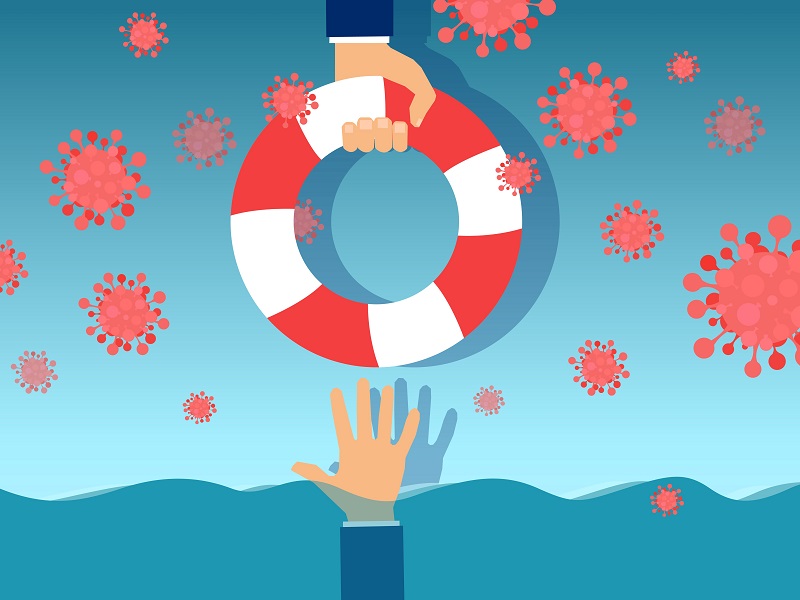

Many of us unfortunately know someone who has experienced a traumatic event. It could be an unexpected event like a sudden death, diagnosis of a terminal illness, a workplace accident resulting in serious injury or death, a car accident, a robbery or act of violence, or a natural disaster. Generally, people who have either directly experienced or witnessed a traumatic event will report feelings of unpreparedness, powerlessness and helplessness. For those managing a person who has been through trauma, it’s easy to feel overwhelmed and ill-equipped to deal with the situation and effectively help the person affected.
While responses to a trauma can vary widely in their range, intensity and duration, a traumatic event almost always results in short-term absence as the person comes to terms with what they have experienced. It’s common for a person who has suffered a traumatic event to experience a variety of feelings that may include grief, sadness, anxiety, panic, detachment, numbness or guilt. Flashbacks are a common experience, as are difficulty sleeping, vivid dreams or nightmares, changes in appetite, irritability, irrational or inappropriate reactions, and difficulty concentrating. Some people also experience nausea, rapid heartbeat, shortness of breath, or body aches and pains. Feelings of denial or wanting to withdraw from others are also normal responses to a traumatic event.
Different people react to trauma in different ways. Some will rebound quickly, while others need a longer time to recover. While many factors impact a person’s recovery, the person’s state of mind at the time of the trauma is a key determinant. Additionally, if the person or thing that caused the trauma is still present, as in the case of a workplace accident on a piece of machinery, or an abusive spouse in a domestic abuse situation, recovery is more likely to be slow and complex.
At any point on the recovery continuum, triggers can occur that bring with them strong reminders of the event. Often, sights or sounds can trigger a flashback or stress reaction, regardless of whether the person is in the location where the traumatic event occurred. Triggers can also cause a delayed response in a person who experienced a traumatic event, but seemed to recover quickly.
André Brunette, coordinator of prevention and training with Solareh feels that employers can play an important role in the recovery process. While a person is still absent from work, reaching out to the employee and helping the employee feel connected to their workplace can ease return to work. Inviting the employee to pop in and have coffee can be a safe and effective early step in reintegrating back into the work environment.
“It’s important, however, for employers to remember that it is not their responsibility to make the employee better,” says Brunette. “Employees returning to work need to readapt to the environment and experience successes.”
Open communication with the returning employee, without delving into personal information about the traumatic event or any treatment they may be receiving, is a key contributor to a successful reintegration. Employers should focus on monitoring job performance, productivity and behaviour at work, taking notes on what they observe, and checking in with the employee regularly.
Some returning employees will request workplace accommodations, like the ability to work from home or shift their hours. Brunette says that while accommodation can be important for a successful return-to-work strategy, this accommodation should come with a time limit. An accommodation could be contributing to the employee’s avoidance of a particular situation or circumstance, like being at a particular intersection where a car accident occurred and eventually, the goal is to help the employee to build their ability to deal with the situation they are avoiding and move past it in a healthy way.
Work teams can also struggle with the return of a coworker who has experienced a trauma. Some people feel they don’t know what to say or wish to avoid discussing what happened with their coworker. Others may feel resentful of their absence or not understand why they are feeling what they are feeling. People leaders can meet with their work teams either in a group or one on one to talk about their concerns, and how the team can best support their colleague. Many EAPs also offer management support for leaders dealing with situation such as these, through telephonic or electronic coaching or resource materials that are available. They’re also a resource for the recovering employee through counseling and can provide reading materials as well as referrals to support groups in the community.
Recovery from a traumatic event takes time and everyone heals at their own pace. A supportive and welcoming work environment is a key component of a successful workplace reintegration, and can go a long way in aiding recovery.
